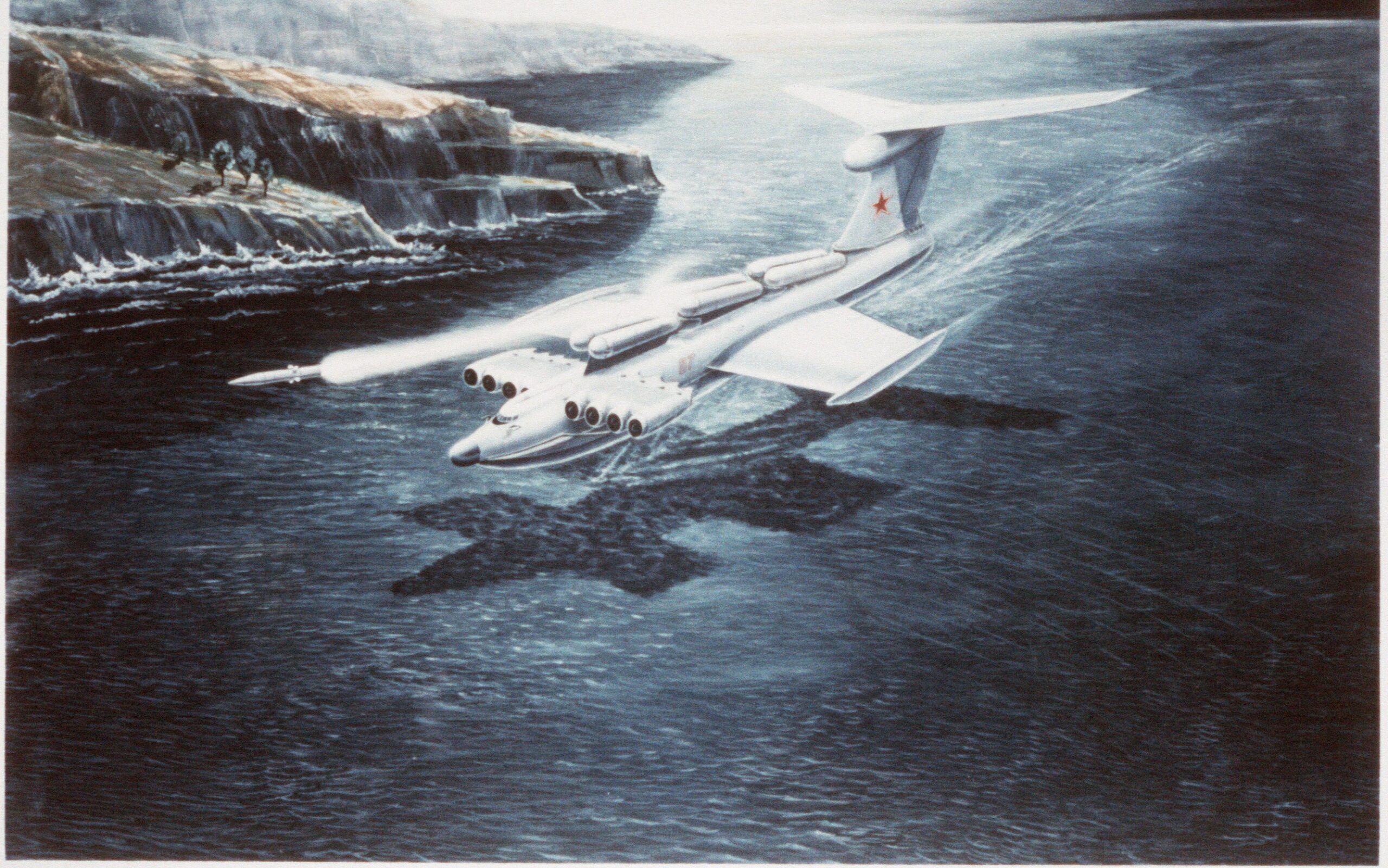
An artist’s concept of a Soviet wing-in-ground effect vehicle from 1988. (Archive.gov)
WASHINGTON: The Pentagon’s premiere research agency published a request for information earlier this month eyeing a new class of aircraft capable of utilizing the “wing-in-ground” effect. But analysts tell Breaking Defense the military’s request, on a relatively short turnaround time, will be a difficult for the industrial base to oblige — and worry that the system might not be viable for more than short trips.
“This is a very hard ask,” Mark Montgomery, a retired rear admiral and now a senior fellow for the Foundation for Defense of Democracies, said of the request for information, which set a one-month turnaround time for industry to respond.
The WIG effect is a well-known aerodynamics principle: by flying at low altitudes just above the water’s surface, the friction of the air against the water helps the plane maintain lift and move efficiently.
WIG vehicles are largely emergent technologies and are far less common than conventional ships or planes. While designs can vary greatly by manufacturer, the vehicles tend to closely resemble traditional planes, with the lower half of the chassis built to allow the craft to float on the water’s surface. While a WIG vehicle’s characteristics are comparable to an aircraft, they are still required to operate as a waterborne vessel and comply with conventional shipping rules, according to the International Maritime Organization.
Now, it seems, DARPA wants to see if it can use the WIG effect to help with sealift requirements. A request for information, published by the agency’s Tactical Technology Office earlier this month, lays out the challenge: sealift ships can carry large payloads, but transit slowly and require well-developed ports to deliver materiel. In contrast, airlift platforms can move quickly, but due to their size and weight, require long runways for takeoff and landing and are of little use to forces underway at sea.
Wing-in-ground effect vehicles “achieve increased aerodynamic efficiencies and address many of the operational limitations of traditional sea and air lift platforms in maritime theaters, but they are unable to operate in high sea states and have limited capability to avoid collisions in congested environments,” according to DARPA’s solicitation.
Which is why the agency is seeking a much more capable platform than what existing WIG vehicles currently offer. Specifically, this platform needs to takeoff and land at up to sea state three and be capable of operating outside the ground effect zone to dodge obstacles and inclement weather. (Sea states are a widely recognized measurement of the ocean’s surface conditions, with sea state zero representing calm waters and nine indicating massive waves up to 50 feet high. Sea state three would consist of light waves up to four feet high.)
The problem with that requirement, Montgomery said, is two-fold. There is the obvious kinetic problem associated with a wave hitting the craft, but the more difficult challenge is that even small waves can disrupt the WIG effect and turn the craft’s ride turbulent — and less than fuel efficient.
A preliminary search of WIG craft will quickly bring up the Lun-class ekranoplan. Built by the Russians in the 1970s and employed until the late 1980s, Montgomery said that vehicle was tested mostly on the Caspian Sea, where the waters are usually much calmer than sea state 3.
Perhaps most importantly, given its sea and airlift missions, this new craft would have to support more than 100 tons of cargo and able to carry “multiple amphibious vehicles.” However, one detail left out of DARPA’s solicitation is the range this new craft must travel.
“I thought they were talking about the last 500 miles. The last 1,000 miles. In other words, from some kind of logistics base into the theater. So, maybe not cross the pond, but cross the first island chain,” Montgomery said.
DARPA declined an interview request about the solicitation citing the nascent stages of its endeavors.
A Realistic Capability?
As with all DARPA projects, the research is only as useful to the extent the military services are willing to transition it into programs of record.
The agency’s solicitation states that conversations with the services show this new aircraft would be useful for the Navy’s two keystone concepts of operation: Distributed Maritime Operations and Expeditionary Advanced Base Operations. The RFI also lists combat search and rescue, distributed logistics, unmanned vehicle operations and “low payload, long duration arctic patrol flights” as viable missions.
Chris Bassler, a senior fellow for the Center for Strategic and Budgetary Assessments, told Breaking Defense the military has considered using WIG vehicles in the past, as have Russia and China for both civilian and military applications. The problem is those efforts have often resulted in “the worst of most design parameters.” The vehicles end up being slower than planes and less cost effective than ships, and, as DARPA’s solicitation explained, they cannot operate in even mildly rough sea state conditions.
“Various studies and technology development efforts have commenced over the decades to see if designs can be developed which can carry more, go faster, and increase the environmental conditions where it can operate,” Bassler said. “This is a good opportunity for a ‘DARPA-hard’ problem, to push some of the technologies which may also be used for unmanned systems, sealift, and tilt rotors.”
Bassler posited a fleet of these new WIG vehicles could prove particularly useful in the Indo-Pacific, where they could shuttle supplies to Marine Littoral Regiments and other special forces operating dispersed among the island chains.
The military’s struggles with a lack of sea and airlift have been surfacing in recent years with top officials monitoring the Pentagon’s lift capabilities offering warnings about an impending cliff in the mid-2020s. Gen. Stephen Lyons, US Transportation Command’s top officer, has characterized closing the sealift capability gap as the command’s top priority.
Sullivan: Defense industry ‘still underestimating’ global need for munitions
National Security Advisor Jake Sullivan said that there are “no plans” for another Ukraine supplemental at this point.


























